After more than 6 months of complaints from local residents, Peabody have announced that they were prepared to offer an independent building survey undertaken by a building surveyor and structural engineer for the residents of Comyn Road and Eckstein Road, whose properties have been damaged by their ongoing construction site.
At the same time, Sisk, their construction site company, has instructed a report from acoustic consultants to suggest other methods that could be used to keep noise to a minimum.
Resident express their anger during video meeting
A video-meeting was organised on Wednesday 30th September 2020 for residents of Comyn Road and Eckstein Road, with Sisk (the construction site contractors) and Peabody to discuss some of the issues that have been raised about the Peabody construction site disruption and noise. To say that the meeting was lively with a lot of complaints from the residents, especially regarding the dismissal of the damages caused by Peabody’s contractors, was an understatement.
Instead of addressing immediately the many months and email exchange between the residents of the properties surrounding the construction site on St John’s Hill, Sisk started by presenting a powerpoint explaining in details the different steps of the project.
While people were confined at home this Spring with the lockdown measures, Peabody and Sicks contractors chose this time to progress with the most disturbing phase of the project: the initial piling.The construction was not altered or slowed by the Covid restrictions and as a consequence, one resident, Valeria, said that she had five different neighbours during the last few months, none of them able to cope with the constant noise and vibration. She questioned why there has been no schedule of condition, no sound proofing, no dust proofing, and that “given the proximity something should have been put in place”.
The projected construction time has already doubled!
From the documents, residents pointed that while it was said to be a 7 years project when it was granted back in 2013, the announced date of finish in 2025 and it looks now to become at least a 14 years project. One of the resident said that: “to get things so wrong, it’s likely that they faked the date to get approval“.
Peabody and Sisk unprepared to respond to residents during meeting
It was clear during the meeting that neither Peabody or Sisk had prepared anything to respond to the resident complaints. The meeting ended by Peabody saying that they would come back before the end of October to respond to residents. One of them, Scott, said that they have visited them months ago and had time to reflect, so he thought that Peabody would have something to announce.
Peabody responded that they have talked to their insurance and can confirm that the damage they “might” have caused is covered (fortunately!) but they must reflect on the process. At the issue of the meeting they said that they will look at the possibilities to mitigate noise and vibration, and whether they can assist with the cost of the survey needed on surrounded Victorian properties. Their site contractor was going to “look at [British site regulation] BS5228” on noise and vibration, which was raised by CJAG in …June 2020!
Although Peabody is still refusing liability, they offer to pay for a survey of the properties damaged by their construction site
In an email received on November 9th, Peabody said they were prepared to offer an independent building survey undertaken by a building surveyor and structural engineer for the residents who attended the meeting. This is on the basis that access to all the properties can be arranged for the same day. Peabody will issue the independent survey to residents for information purposes only.
Shamefully, Peabody is still denying any liability. However, it would be difficult to refuse compensation once the surveys highlight damages caused by their construction site.
Of course, residents will also need to talk to their insurer, and might require a separate survey commissioned directly by the insurers should a claim be pursued, but this is undoubtedly a step in the right direction.
Construction site company Sisk forced to commission acoustic report
In direct response to resident complaint and CJAG report, (and maybe under the direct pressure of Peabody), Sisk has commissioned acoustic consultants to observe operatives on site and suggest other methods that could be used to keep noise to a minimum. Sisk said that “once this report is received, it will be rolled out to the teams on site“.
In the meantime, they have instructed new subcontractors to have additional noise mitigations in place: steel frame subcontractor have upgraded their acoustic barriers and installed these in each plot. 80% of the metal they use is pre-cut before coming to site, which will further avoid additional noise outputs. In addition, their concrete frame subcontractor is trialling methods to reduce the noise, including dead blow hammers, from the steel frame work adjustments.
Specific response to CJAG comments on Sisk lying about saying their vibration measurement were very cautious
Obviously, Sisk did not know how to respond to CJAG claim that they were lying when they said that their vibration monitoring was “set conservatively low at half the onset of cosmetic damage for unreinforced or light-weight framed structures“. CJAG based their assertion on 2 facts:
- CJAG consulted the guidance BS 5228: Part 4: 1992 ‘Code of practice for noise and vibration control applicable to piling operations’ and found Sisk monitoring was actually at double the level set to cause structural damage to the type of residential structure you will find in Comyn Road (i.e. Victorian Terrace more than 100 years old, likely to have fragile structure/significant defects).
- CJAG talked to the company Vibration Monitoring Services Limited, which confirmed to that for a site surrounded by Victorian properties (listed buildings and old buildings), they would normally set the levels at 3 to 5mms, not 10 as Sisk did.
In October (more than 3 months after our claim!) Sisk have instructed acoustic consultants to provide an update on the site monitoring and how they adhere to the current British Standards. The acoustic consultants started by saying that we have been using the old-dated version of the guidance:
“The version of the British Standard, CJAG have commented upon being used within the original Environmental Statement for the project dates back a superseded version of the standard which was originally released in 1992.”
Instead, CJAG should have referred to the latest guidance as described within the current version of BS 5228 Part 2 released in 2009 with amendments in 2014. They explain:
“The higher “Red” vibration limit of 10 mm/s is based upon guidance provided within BS5228:-2 2009 “Table B.2 Transient Vibration Guide values for cosmetic damage”. The limit has been set assuming the type of buildings is “Residential or light commercial buildings”, and at half the threshold for the onset of cosmetic damage, assuming a minimum dominant frequency of 15Hz. […] This basis of choosing the “Red” limit at half of the onset of cosmetic damage based upon a lower anticipated dominant frequency from construction works is considered conservative and robust providing a large margin above the threshold for the onset of cosmetic damage. […] The majority of the buildings around the site are 3 story Victorian buildings, and unless they have specifically been identified as being structurally unstable or have a structural fault it would normally be assumed, they are not necessarily exceptionally sensitive to vibration.”
Fair enough, as per the consultants indications, CJAG are now referring to the updated version of BS 5228-2 2009… and CJAG stands by our report implying that their measurement is not “conservative” regarding the circumstance.
But first of all, let’s read the BSI introductory statement [p2]: “It is suggested that good relations can be developed by keeping people informed of progress and by treating complaints fairly and expeditiously” and “vibrations transmitted from site activities to the neighbourhood can, therefore, cause anxiety as well as annoyance, and can disturb sleep, work or leisure activities“. In view of the anger built by local residents, it is doubtful that Sisk treated the complaints fairly and expeditiously, and in consideration with the specific lockdown imposed by the Covid pandemic.
In addition, not willing to draw in any expert argument, we would happily keep the discussion open and challenge any statement coming from Sisk on our previous report.
CJAG consulted a memorandum dated 2014 from an English County Council about the impact of vibration due to piling work. The report confirms Sisk consultants statement and says that the level of vibration (Peak component particle velocity – PPV) for residential or light commercial type buildings should be 20 mm/s at 15Hz. However, the report also says:
“There are several important points to be noted about these guidelines values since they are not applicable to all situations. An important point to note is that they relate to transient vibration only. When continuous vibration is prevalent, such as for piling, it can lead to dynamic magnification due to resonance within structural elements. In theses situations, BS 7385-2:1993 recommends that guideline values at the foundation should be reduced by up to a factor of two. […] Adherence to this recommendation is common practice and should be applied where continuous vibration is prevalent”
BS 5228-2:2009+A1:2014 also suggests that where buildings might have structural defects (and with very old buildings such as Victorian houses, this is likely to be the case and at least cannot be assumed without defect) the guideline values should be reduced.
The report also highlight the likelihood of secondary effects that are not directly caused by the vibration: the vibration can accelerate the settlement of ground underneath building foundations, therefore encouraging cosmetic damage and at some extend structural damage depending on the soil.

And the report concludes that in the case of a traditional two storey, brick-built residential property, it is recommended that these guidelines values should be reduced by a further 50% as a precautionary measure. This leads to a set of guideline values for cosmetic damage of 3.75 mm/s PPV at 4Hz to 5 mm/s at 15Hz and increasing to 12.5 mm/s at 50Hz.
Another report published in 2017 by Cork County Council recommends [p3] that a conservative criteria is to limit the construction vibration at 6 mm/s for potentially vulnerable buildings. And as vibrations are not only a “hot” topic in the UK, we found that a US study stated that a PPV of 3 mm/s is intended to prevent minor architectural damage as well as structural damage for fragile historic buildings.
Therefore, the chosen limit of 10 mm/s PPV cannot be considered as “conservative” in the situation.
To conclude, CJAG wanted to quote directly BS 5228-2:2009+A1:2014 [p4]:
“In general, the longer the duration of activities on a site, the more likely it is that vibration from the site will prove to be an issue. In this context, good public relations and communication are important. Local residents might be willing to accept higher levels of vibration if they know that such levels will only last for a short time. It is then important that site operations are carried out according to the stated schedule and that the community is informed of their likely durations. […] The attitude to the contractor can also be improved through good community liaison and information distribution and the provision of a helpline to respond to queries or complaints. The acceptability of the project itself can also be a factor in determining community reaction.”
UPDATE 12/11/2020: It has been announced today Thursday 12th November at the residents meeting that Peabody in discussion with Sisk and Wandsworth about changing plot 6 to private sale. This would mean the remainder of the social homes would be provided in phase 3.
It will be very interesting to see what comes out of the discussions, Peabody playing the developers game.
UPDATE 19/11/2020: We have received a response from Sisk:
- When monitoring construction activities on site, 1mm/s PPV is our amber alert. This means that upon an amber alert we proactively manage any works taking place and find other ways of approaching our works when practicable. The red alert level is set to 10mm/s PPV and is our absolute maximum level for transient events, and would not normally be expected to occur, as we manage our works wherever possible well below this. Although a transient exceedance of this level would not normally be expected, as an industry-standard approach the potential for this has been considered and appropriately managed. As I have said before, we send all our readings across to Wandsworth Council for their review.
- Any works that may have caused perceptible vibrations, such as demolishing the wall and piling associated activities, have now completed on site. If residents are still expressing concerns about vibrations to their homes, we are not able to confirm sources of vibration arising from outside our site.
- We have looked at vibration from our works throughout the project and taken precautions in the methods used on site. For example, when demolishing the boundary wall, we used hand tools for the top section of the wall to limit the impact on the surrounding area.
- Before any disruptive works take place on site, we communicate this to the local community, including timeframes and the method that we are taking. We listen to any complaints received from residents and take action to try to resolve their concerns as quickly as possible. As an example, when residents thought the monitoring device wasn’t close enough to their homes to be relevant, we moved it to the best possible location nearer to them. As a conscientious construction company, Sisk proactively investigates alternative ways of working to minimise noise and vibration to neighbours wherever practicable.
- Sisk have instructed acoustic consultants before starting on site and have continued to liaise throughout the project duration with them where necessary. We comply with our S61 Notice and Wandsworth Council’s Code of Best Practice. We are continuing to take extra precautions to protect residents from our construction activities on site, in ways that are meeting modern levels of best practice.
UPDATE 19/11/2020: As part of the ongoing regeneration project of St John’s Hill/Burridge Gardens, Peabody have appointed social value consultants ‘RealWorth’ to conduct a social value baseline survey about the current conditions in and around the St. John’s Hill/Burridge Gardens area.
The survey focuses on the social value of their scheme proposals, and the wider area, to understand what can be improved. Questions are vague such as:
What do you like about the St. John’s Hill/Burridge Gardens area in its current form? / What would you do to make things even better? / What do you dislike? / What would you change to improve this?
Unfortunately there is no questions about the scheme (including past controversies with the surrounding community), the current relationship with the community, the disturbance it may create, the current resident issues with the buildings…
Peabody said to us: “There is the opportunity to add further comments at the end of the survey for anything that cannot be captured in the other questions.” But so far it looks like a simple PR exercise.


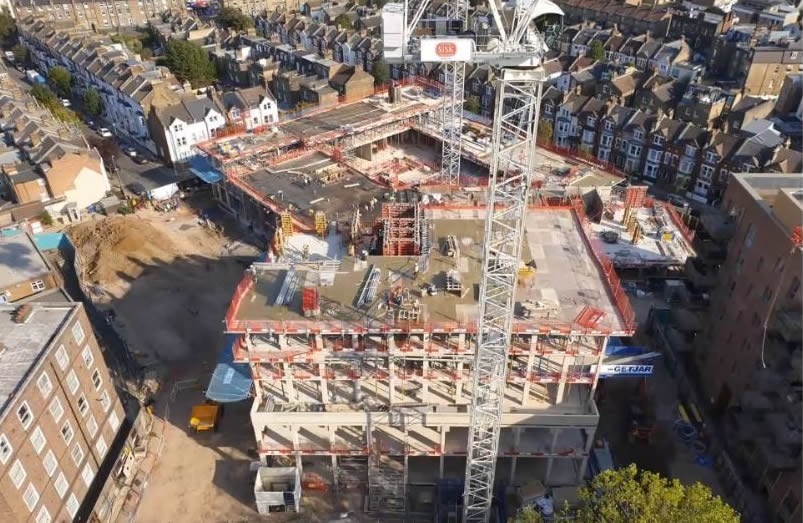


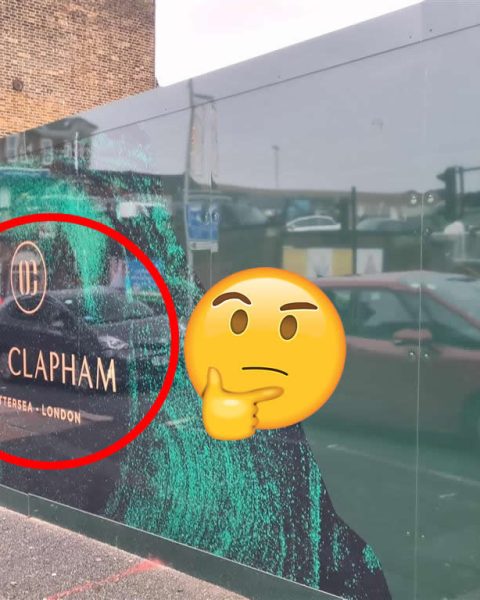
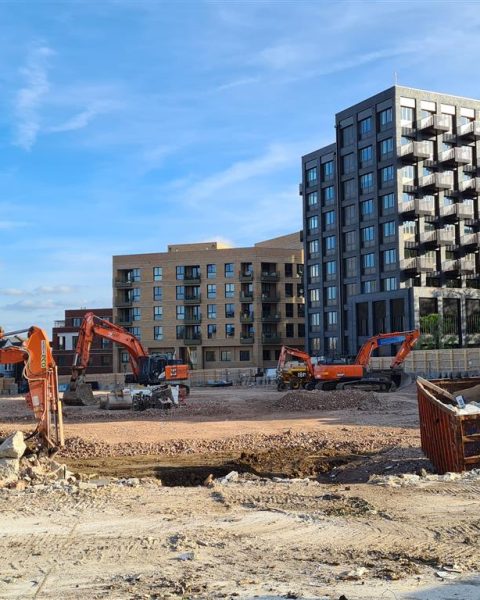
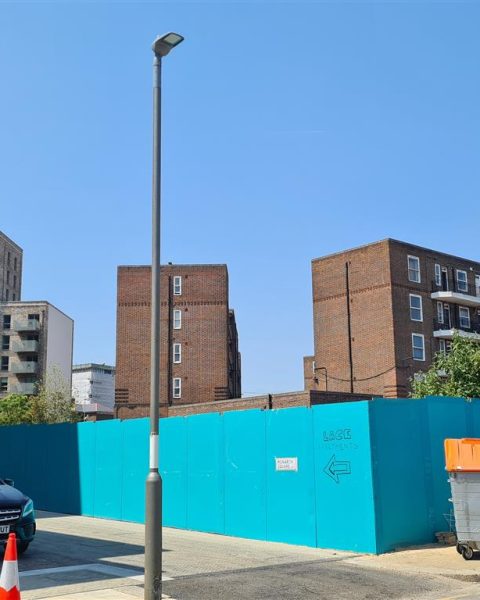
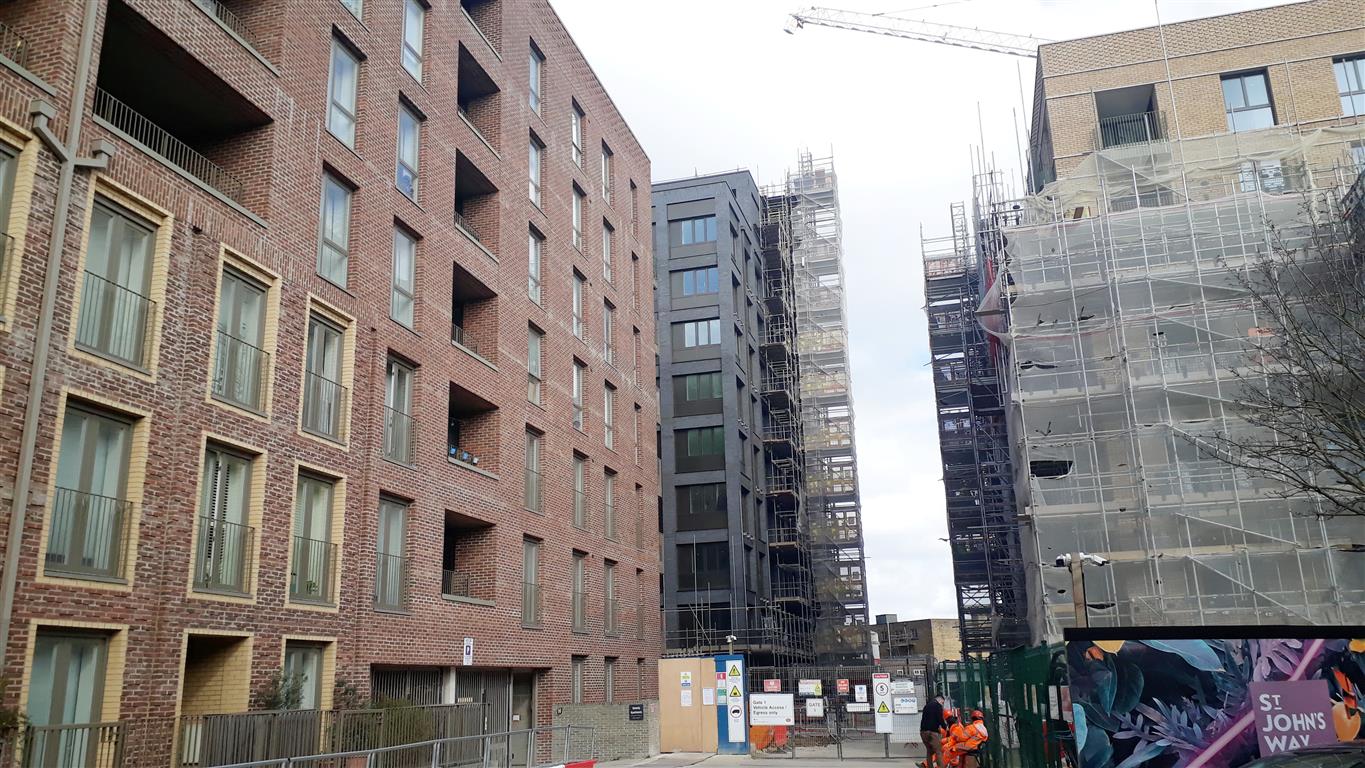




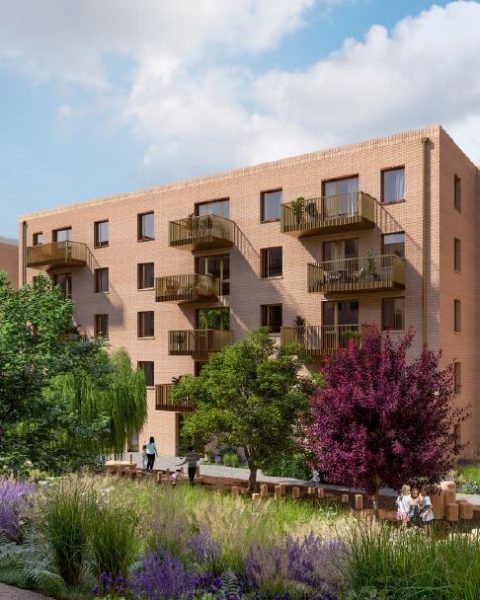






Oh sorry I thought that you were talking about Coda. I think that Peabody have taken one of the blocks for discount rent. This is a different site and I see that they are paying for a surveyor to see if there has been any damage.
Hope that you have a good weekend.
Kind regards
Formal Photo2
Cllr Melanie Hampton
Conservative Councillor for St Mary’s Park Ward